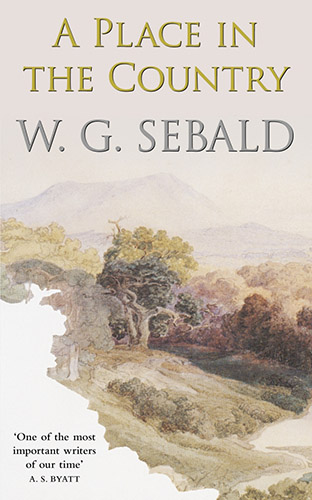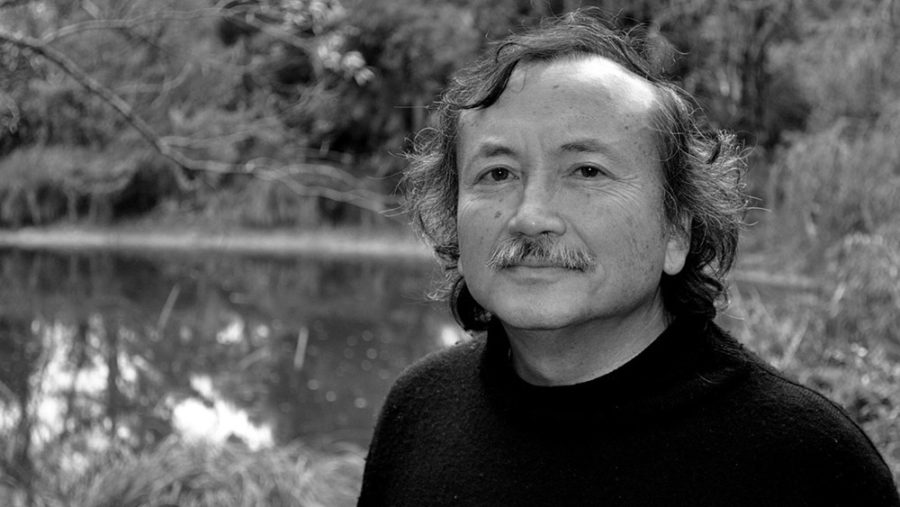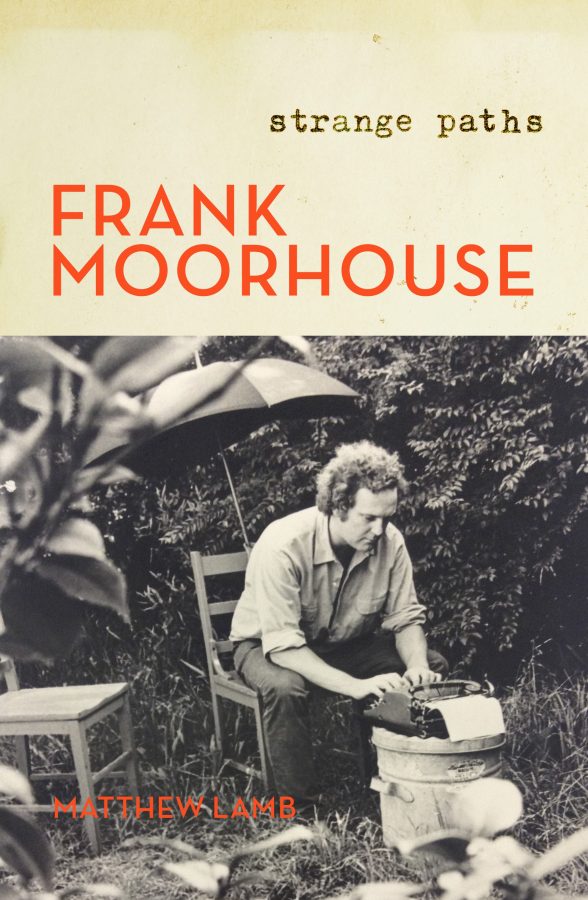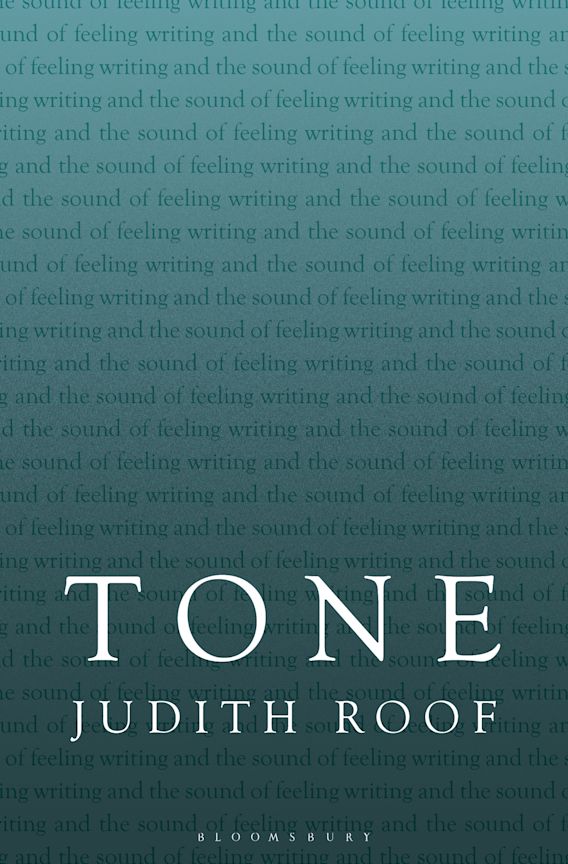If I were allowed one book to take to an island, it would have to be A History of English Prose Rhythm by George Saintsbury. It is the book I regularly toss into the back of the car upon the threat of a bushfire. Last printed in 1912, it can hardly be found anywhere. Undertaking a study of metre and rhythm in English prose style, Saintsbury makes himself susceptible to the hidden charms revealed through scansion in his analysis of authors from John Wycliffe to Robert Burton, Sir Thomas Browne to Thomas de Quincey, Samuel Taylor Coleridge to Jane Austen. Saintsbury was reproached by some severe dons for taking delight in the ‘rainbow beauty of what was really a miracle of incrustation’. (Oh, the plodding unadventurousness of English empirical criticism!) He parried by calling their rebuke a ‘miracle of galimatias’, or bullshit. Prose style is not a historical build-up of guano. It thrives on differentiation, albeit between long and short sound-qualities, but the process is not so much a listening as a ‘seeing’ through closed eyelids.
W.G. Sebald, in an interview with Robert McCrum in the Observer on 7 June 1998, alluded to his own enchantment with an English prosody no longer in use:
It so happened that a friend of mine was in the process of translating into German, which is quite an impossible task, Aubrey’s Brief Lives, and he did it in the most brilliant way by inventing an artificial seventeenth-century German, and so I got more and more into reading seventeenth and early eighteenth-century English authors, and the density of miraculous achievements there is staggering.
James Wood has critiqued Sebald for the mysterious fudging of trauma in Austerlitz (2001) by ‘an exquisitely courteous syntax’ and a ‘deliberate antiquarianism’. Sebald, it should be noted, was a skilled translator, not only between languages but between histories. He was also an inventor. He would no doubt have read Saintsbury’s book and would have been conscious of the way grammars work according to their social and historical contexts. Syntactic and rhythmic constructions of meaning are relative to their times, and in this relation, in this transposition of one grammar upon another, one period overlaid upon another, Sebald judges the distance and perspective of truth and trauma. The ‘deliberate antiquarianism’ is an archaeology of the emotions, wrought with accompanying prose rhythms of strangeness and enchantment. Essentially, it mediates between a modern ‘subjective’ conception of expression and a pre-modern language ensconced in a tradition in which self-expression was seen to be objective and communal – an exaltation, perhaps an exhalation of observation. Montaigne’s examination of self, for instance, fragments and returns to its common roots, even suggesting that one dies together with others – commourans – ‘among sports, feastings, wit, and mirth, common and indifferent discourses, music, and amorous verses’.
With the exception of George Steiner, there is no greater exponent of the methodology of critical receptivity through the activity of the senses than Jean Starobinski. A member of the Geneva school, he studied medicine and classical literature, becoming a leading scholar in both disciplines, as well as a philosopher trained in phenomenology. Starobinski’s method of ‘sensible seeing’ employs a critical ‘gaze’, which engages with the text through the senses and not only through the mind. It encapsulates a consciousness of the distance between us and the object of our examination. It is a ‘living eye’ (the title of one of Starobinski’s books), which simultaneously makes us aware of the polyphony of context, aware of an experiential reality, and actively ascribes meaning to our gaze. Crudely put, it is the double role of consciousness to see immediacy and distance, providing the distance emerges from a mind trained in textual reading.
I am reminded of Elias Canetti’s recollections of Hermann Broch. In a chapter entitled ‘Eye and Breath’ in The Play of the Eyes (1985), Canetti has this to say about Broch:
Other writers collected people, he collected the atmospheres around them, which contained the air that had been in their lungs, the air they had exhaled. From this collected air he deduced their particularity; he characterized people on the basis of the atmospheres they gave off. This struck me as utterly new, it was something I had never before encountered. I knew about writers in whom the visual and others in whom the acoustic element was dominant. I had never dreamed of a writer who might be characterized by his way of breathing.
This is not as silly as it may sound. Broch’s reticence was well known. His silence placed others in an enabling role, perhaps forcing them into foolishness in order to fill the void. In this way, he was practising sensible seeing, exploring and understanding character within context, finding meaning in reading the blind spots of social life.
One could say Sebald employs the same methodology in A Place in the Country. In its six essays on five writers and a painter, his gaze operates like a form of scansion, picking up the long and short sounds (moments musicaux as Sebald calls them, via Schubert) in order to get behind the art in all its grief and consolation, to discover the differentiation between the life and the work. This is not a neat separation. Too often in critical writing, suspicion of writing about the life when interpreting the art work functions as a kind of check, a form of deference to the authority of ‘objectivity’. It is a suspicion grounded in bio-metrics, an assessment that erases the human and its paradoxical nature from the humanities. Often, to separate text from person is to misunderstand on a fundamental level of meaning. As Starobinski points out:
In considering differentially the work and the psychological life, it is no longer the principle of emanation or reflection that is at work, but the principle of creative invention and desire, of successful metamorphosis. It is necessary to know the man and his empirical existence in order to know what the work is opposing or its coefficient of negativity.
Sebald employs this sensible seeing in his excursions into the worlds of Johann Peter Hebel, Jean-Jacques Rousseau, Eduard Mörike, Gottfried Keller, Robert Walser and Jan Peter Tripp. All six share a common ‘coefficient of negativity’; all are, in a way, mental and physical ‘wanderers’, exiles, purveyors of resistance, who nullify their own roles and purge themselves of vanity. They inhabit a place in the country, not in terms of a Heimat or home, but a Logis – lodgings, an inn, a temporary accommodation, which sometimes takes the form of an asylum. This resistance and exile can be summed up in a significant paragraph on Hebel, a paragraph which characterises Sebald’s sensible seeing as well as Hebel’s practice:
The words are, in this sentence, not set down in accordance with Alemannic usage, but rather follow exactly the word order of Yiddish, which refuses to subordinate itself to the rules of German syntax. This fact alone ought to be enough to refute the primitive Heideggerian thesis of Hebel’s rootedness in the native soil of the Heimat. The highly wrought language which Hebel devised especially for his stories in the Almanac makes use of dialect and old-fashioned forms and turns of phrase precisely at those points where the rhythm of the prose demands it, and probably functioned even in its own day more as a distancing effect than as a badge of tribal affiliation.
Prose rhythm is, of course, a Sebaldian trade-mark. He may have caught it from others like Thomas Bernhard or Robert Walser or Sir Thomas Browne. It is prosodic in terms of its feet and metre: a wanderer’s repudiation of fixity and full-stops. The rhythm carries the narrative forward, reflecting the author’s willingness to walk in step with a narrative filled with divagation and digression, detours and divertissements. There is no set plot or destination, but this walking is accompanied by an anxiety to write, an awful compulsion to keep writing unto death.
Walser called the writing-walking process his Walseries. This scribal-ambulism begins with a distinctive movement, an opening to a moment musical, a getting ready, a preparation, a checking of the mental rucksack:
At the end of September 1965, having moved to the French-speaking part of Switzerland to continue my studies, a few days before the beginning of the semester I took a trip to nearby Seeland, where, starting from Ins, I climbed up the so-called Schattenrain. It was a hazy sort of day, and I remember how, on reaching the edge of the small wood covering the slope, I paused to look back down at the path I had come by, at the plain stretching away to the north criss-crossed by the straight lines of canals, with the hills shrouded in mist beyond; and how, when I emerged once more into the fields above the village of Lüscherz, I saw spread out below me the Lac de Bienne, and sat there for an hour or more lost in thought at the sight, resolving that at the earliest opportunity I would cross over to the island in the lake which, on that autumn day, was flooded with a trembling pale light.
This island refuge, described with precision and lassitude, replete with a listing of atmospheres, mirrors and incorporates Jean-Jacques Rousseau’s mental Logis in his Reveries of the Solitary Walker (1782): his reflections during his numbered ‘Walks’, in which rational classification of nature and periodic paranoia alternate with the fatigue of continuous exile and the melancholic burden of writing.
Sebald’s beginnings have a sinuous resistance to beginning. After all, if writing is such a compulsive burden, then at least walking exercises a different compulsive faculty that exorcises thought. Scribal-ambulism then, may have a curative effect on melancholia, but one that Rousseau found was, in the end, untenable. The clarity of the world, for which this ultimate autobiographer yearned, the transparency he sought, could not be sustained. As Jean Starobinski asserts, the inner life and external reality cannot be compatible. Interiority is essentially a failure in relating to reality, and this is the substance of all writing lives.
That is why the beginning of each ‘walk’ taken by Sebald, by Walser, by Rousseau, embodies anxiety. It is a preparation for meeting the shock of the real and its resistance to being possessed by the mind. Anyone aware of sensible seeing would understand the furtive nature of writing, its opposition to clarity and transparency, its irrational refusal to speak for its author, its invention of a negative dialectic. There is a lot of fiddling about in order to get into a place, and that ‘place’ is ultimately a place in the language which will not yield to a universal historiography – Starobinski, for example, avoids dates in his study of Rousseau.
Both Sebald and Starobinski ‘see’ through Rousseau’s language. According to Starobinski,
philology is indispensable for establishing scrupulously accurate texts and determining precise definitions for words in their historical context. Any interpretation, no matter how ingenious, that fails to meet the requirements of philological rigour will be literally without foundation.
Sebald, too, complies with this rigour in his overlays or templates, which he applies to each writer. He walks the walk and talks the talk.
Robert Walser also had to get ready to write before each of his walks. His long story ‘The Walk’ comes in two versions. Susan Bernofsky, who translated the current version, pointed out that Walser streamlined the beginning after the original translation by Christopher Middleton, thus eliminating all the meta-commentary. Here is the original:
I have to report that one fine morning, I do not know any more for sure what time it was, as the desire to take a walk came over me, I put my hat on my head, left my writing room, or room of phantoms, and ran down the stairs to hurry out into the street. I might add that on the stairs I encountered a woman who looked like a Spaniard, a Peruvian, or a Creole. She presented to the eye a certain pallid, faded majesty.
The revised version reads as follows:
One morning, as the desire to take a walk came over me, I put my hat on my head, left my writing room, or room of phantoms, and ran down the stairs to hurry out into the street. On the stairs I encountered a woman who looked like a Spaniard, a Peruvian, or a Creole and presented to the eye a certain pallid, faded majesty.
Walser erased the act of composition, removing ‘I have to report’, ‘I might add’, etcetera. The ‘by the way’ process of moving the narrative forward enhances the reluctance of encountering the real. The rhythm and tone in the streamlined version is altered to create a more immediate beginning. But the meta-commentary of the original made the business of writing apparent in an almost antiquated act of self-preparation. It delayed the action to distance it philologically, and to adjust to the rhythm of scribal-ambulism. These divagations correspond with an unusual and perhaps psychologically extreme compulsiveness.
Nor is Walser unaware of his language – for instance, at what distance he should pitch it? ‘What mode of speaking was favoured by, for example, castle ladies in this era? Did they speak a language as curly as locks of hair, tousled and nonetheless well-rooted and as gracefully arranged as a covey of quail and as dark as the interior of a vast woodland?’ he asks in Microscript 116. He made it known to his friend Carl Seelig that he ‘always carefully abstained from writing in dialect. I find that displays an excessive familiarity with the masses. The artist must hold himself at a distance from that.’
Walser, an inmate at several mental institutions, was trying to normalise his extreme compulsiveness and oddness through self-editing. Writing was a furtive business. He carried tiny pieces of paper on his long walks – halves of postcards, matchbook covers, stamps, envelopes – upon the backs of which he wrote his ‘microscripts’ in a hand so small it had to be deciphered through a magnifier. These are reproduced in a singularly intriguing book, Microscripts (2010), also translated by Susan Bernofsky. After all, one of Walser’s jobs at the asylum was at its post office, tidying up scrap paper, untying and straightening string, and at times copying letters for others.
Bernofsky supplies the scriptural and, in a way, philological context for this furtive scribal-ambulism:
The writing that looked like secret code in Carl Seelig’s eyes turned out to be a radically miniaturized Kurrent script, the form of handwriting favored in German-speaking countries until the mid-twentieth century, when it was replaced by a Latinate form similar to that used in English. Kurrent is medieval in its origins, all up-and-down slanting angles. It is a form of script better suited to compression than modern handwriting, though its graphic simplicity – an e is represented by a simple pair of vertical ticks like a quotation mark, an s by a mere slash – means that shrinking it down results in a dramatic loss of detail and comprehensibility.
Walser explained his hatred of his pen when, after adopting what he called his ‘pencil-system’, he discovered the art of patience and, one might add, the rhythm of compression and resistance to being read by the world:
This pencil method has great meaning for me. The writer of these lines experienced a time when he hideously, frightfully hated his pen, I can’t begin to tell you how sick of it he was; he became an outright idiot the moment he made the least use of it; and to free himself from this pen malaise he began to pencil-sketch, to scribble, fiddle about.
One can see here the Bernhardian and Sebaldian sources of rhythm and repetition, of conjunction and compounding, preparation and patience, delay and deliberation. Take a look at the latest novelist to be infected by this, Teju Cole, in his novel Open City (2011):
And so when I began to go on evening walks last fall, I found Morningside Heights an easy place from which to set out into the city. The path that drops down from the Cathedral of St. John the Divine and crosses Morningside Park is only fifteen minutes from Central Park. In the other direction, going west, it is some ten minutes to Sakura Park, and walking northward from there brings you toward Harlem, along the Hudson, though traffic makes the river on the other side of the trees inaudible. These walks, a counterpoint to my busy days at the hospital, steadily lengthened, taking me farther and farther afield each time, so that I often found myself at quite a distance from home late at night, and was compelled to return home by subway. In this way, at the beginning of the final year of my psychiatry fellowship, New York City worked itself into my life at walking pace.
Perhaps these walks are prophetic of the incumbent mortality embodied in writing, the idea that to nullify one’s writing is to ensure its posthumous resurrection. Certainly, Sir Thomas Browne’s Urn Burial conjures up a resurrection through writing. Walser does the same thing by omitting a large part of himself from his works. Only through minor observations is there any sign of himself, as though you glimpse his shadow in the photo taken with the sun behind. He is sometimes sententiously theatrical and declamatory, and when he writes of pastoral scenes against the backdrop of war, one enters the arena of farce. But only just, because he is there too – only just, and with a prognosis of despair. His lists are legendary. At the end of ‘The Walk’ he writes:
Perhaps this is just the place for a few everyday things and street events, each in its turn: A splendid piano factory and also several other factories and company buildings; an avenue of poplars close beside a black river; men, women, children; electric trams croaking along, each with a responsible field marshal or general peering out; a group of charmingly checkered and spotted pale-colored cows …
Since I wished to lie down somewhere and by chance a cozy little place by the lakeside was quite nearby, I made myself as comfortable as I could, tired as I felt, on soft ground under a friendly tree’s artless branches …
‘Did I pick flowers to lay them upon my sorrow?’ I asked myself, and the flowers fell out of my hand. I had risen up, to go home, for it was late now and everything was dark.
On Christmas Day 1956, having left the asylum at Herisau to ascend the Rosenberg and then to descend towards Wachtenegg, Walser’s heart gave out in the snow at 860 metres in full sunshine. His friend Carl Seelig, in his book, Walks with Robert Walser (still not translated into English), wrote that Walser was ‘an authentic poet who nourished in his child’s heart the nostalgia for a world of silence, of purity and of love’.
What seems to unite all six subjects under Sebald’s gaze in A Place in the Country is this ‘child’s heart’, albeit a heart agonised, like Rousseau’s, by the adult world of language. Each of these subjects projected into their works an embarrassment before sophistication, a yearning to be loved, and a modesty that withheld action upon desire. Sebald, like Starobinski, cautions against reading their works as immediate experience. In his essay on Mörike, he links craft and life in this way:
Certainly a rare adeptness at their craft, permitting the most minute adjustments and nuances; and then, or so I imagine, a very long memory and, possibly, a certain unluckiness in love, which appears to have been precisely the lot of those who, like Mörike and Schubert, Keller and Walser, have bequeathed to us some few of the most beautiful lines ever written.
The tenor of Sebald’s essays, therefore, is one of gentle admiration – achieved, allowed, because of an ability to see, through ‘closed eyelids’, the dangerous privilege of distance. Of Gottfried Keller he says: ‘It says much that in Keller’s work the true lover is barely more than a child …’ That child is often the guardian of silence in a debate with reflection, exhibiting an awkwardness before women, unique, as Sebald remarks of these child-lovers, ‘inasmuch as in them desire is not immediately betrayed by the fixed masculine gaze’.
The danger for Rousseau, as Starobinski noted, was in reflection, which comes between authenticity and utterance. In his book Jean-Jacques Rousseau: Transparency and Obstruction (1988), Starobinski marks the birth of modern literature as the point at which
Language has become a locus of immediate experience even as it remains an instrument of mediation. It demonstrates two things: that the writer is bound up with his inner ‘source’ and that he needs to face judgment, that is, to win justification in the universal.
This dangerous liaison between ego and language in which, as Starobinski says, ‘man makes himself the word’, is very much the sort of ‘éducation sentimentale’ that interested Sebald, though it should be noted that the romanticism in the word ‘sentimentale’ can also carry nuances of a more refined sensibility. Stendhal would perhaps have written ‘L’éducation sensible’. Feelings and appearances can deceive unless one takes the walk oneself.
Sebald’s scribal-ambulism and obsession with Stendhal made its first appearance in his early book Vertigo (1999). The German title is Schwindel. Gefühle. The first word can mean vertigo, swindle, fraud or trick. The second word means feelings. His Stendhalean obsession (one could say every novel by Stendhal is a story of just such a sensitive education) may have contributed to the one curious error I found in A Place in the Country. In his essay on Rousseau, Sebald writes:
He finishes the Confessions and reads from them in various salons in sessions lasting up to seventeen (!) hours, to some extent anticipating Franz Kafka’s desire to be allowed to read aloud, to an audience condemned to listen, the whole of Stendhal’s Éducation sentimentale at one sitting.
Of course, it was Gustave Flaubert who wrote L’éducation sentimentale. Flaubert’s devastating irony – the hero of his more than 400-page novel learns virtually nothing – is probably not what Sebald intended in this context. This Freudian slip and editing oversight (what are the rules of editing posthumous works?) is where a beginning might have been made in this essay on sensible seeing: seeing as an activity of the senses and not of the mind; irony as an intellectual exercise that destroys the sacred vessels. Flaubert exploited this breaking of the vessels to stunning effect in Madame Bovary, marking the moment of the transference of power from romanticism to modernism. Sebald, though, has no use for the cuts and thrusts of an irony that diminishes his pilgrimages to honour the ‘clairvoyants of the small’ – those who were perhaps seen as second-raters in their day; humble geniuses of the heart overwhelmed by failure. The world was already cruel enough.
I had the privilege of meeting Max Sebald at the Prague Literary Festival in April 1999. I had spent the previous month in bed with a slipped disc in my back, reading The Rings of Saturn (1998). At the beginning of that book, Sebald writes with the customary preparation for writing so notable in Stifter, Walser and Bernhard:
At all events, in retrospect I became preoccupied not only with the unaccustomed sense of freedom but also with the paralysing horror that had come over me at various times when confronted with the traces of destruction, reaching far back into the past, that were evident even in that remote place. Perhaps it was because of this that, a year to the day after I began my tour, I was taken into hospital in Norwich in a state of almost total immobility. It was then that I began in my thoughts to write these pages.
While other readers saw this hospitalisation as the result of a nervous breakdown, I recognised the symptoms of a spinal disc herniation. In Starobinski fashion, I netted the contexts from which Sebald had drawn his silken threads of narrative, while simultaneously using my newly acquired ability to read back-pain. I put this to Sebald. He looked surprised and then smiled. ‘Yes,’ he said, ‘when one walks around the English coastline anti-clockwise, one leg is always lower than the other. It is more of a problem for tall fellows like me than it is for you.’
It was form of enlightenment for me that Sebald had within him so much humour, and so much irony of a gentle kind. Everyone referred only to his melancholy. We met again the next day at the Slavia restaurant on the banks of the Vltava. After lunch he said he was off to Theresienstadt to meet an old friend. It was starting to snow. I gave him my card in the hope he would one day visit Australia. He placed it into a ski pouch he had around his waist and said that everything that went in there would probably not come out again. And so he became the guardian of silence as he disappeared into that muffled and darkening afternoon.
References
Elias Canetti, The Play of the Eyes, translated by Ralph Manheim (Farrar Straus Giroux, 1986).
Teju Cole, Open City (Random House, 2012).
Gustave Flaubert, L’éducation sentimentale (Société Les Belles lettres, 1958).
Michel de Montaigne, ‘De la vanité,’ Les Essais, Livre III, Chapitre IX (1595).
George Saintsbury, A History of English Prose Rhythm (Macmillan, 1912).
W. G. Sebald, The Rings Of Saturn, translated by Michael Hulse (Harvill, 1998).
W. G. Sebald, Vertigo, translated by Michael Hulse (Harvill, 1999).
W. G. Sebald, Austerlitz, translated by Anthea Bell (Hamish Hamilton, 2001).
Carl Seelig, Promenades avec Robert Walser (Éditions Payot & Rivages pour l’édition de poche, 1992).
Jean Starobinski, ‘La Relation Critique,’ L’oeil vivant, vol. 2 (Gallimard, 1961).
Jean Starobinski, Jean-Jacques Rousseau: Transparency and Obstruction, translated by Arthur Goldhammer (University of Chicago Press, 1988).
Jean Starobinski, The Living Eye, translated by Arthur Goldhammer (Harvard University Press,1989).
Robert Walser, The Walk, translated by Christopher Middleton and Susan Bernofsky (New Directions, 2012).
Robert Walser, Microscripts, translated by Susan Bernofsky (New Directions, 2010).
James Wood, ‘W.G. Sebald’s Austerlitz,’ The Fun Stuff and Other Essays (Farrar Straus Giroux, 2012).







